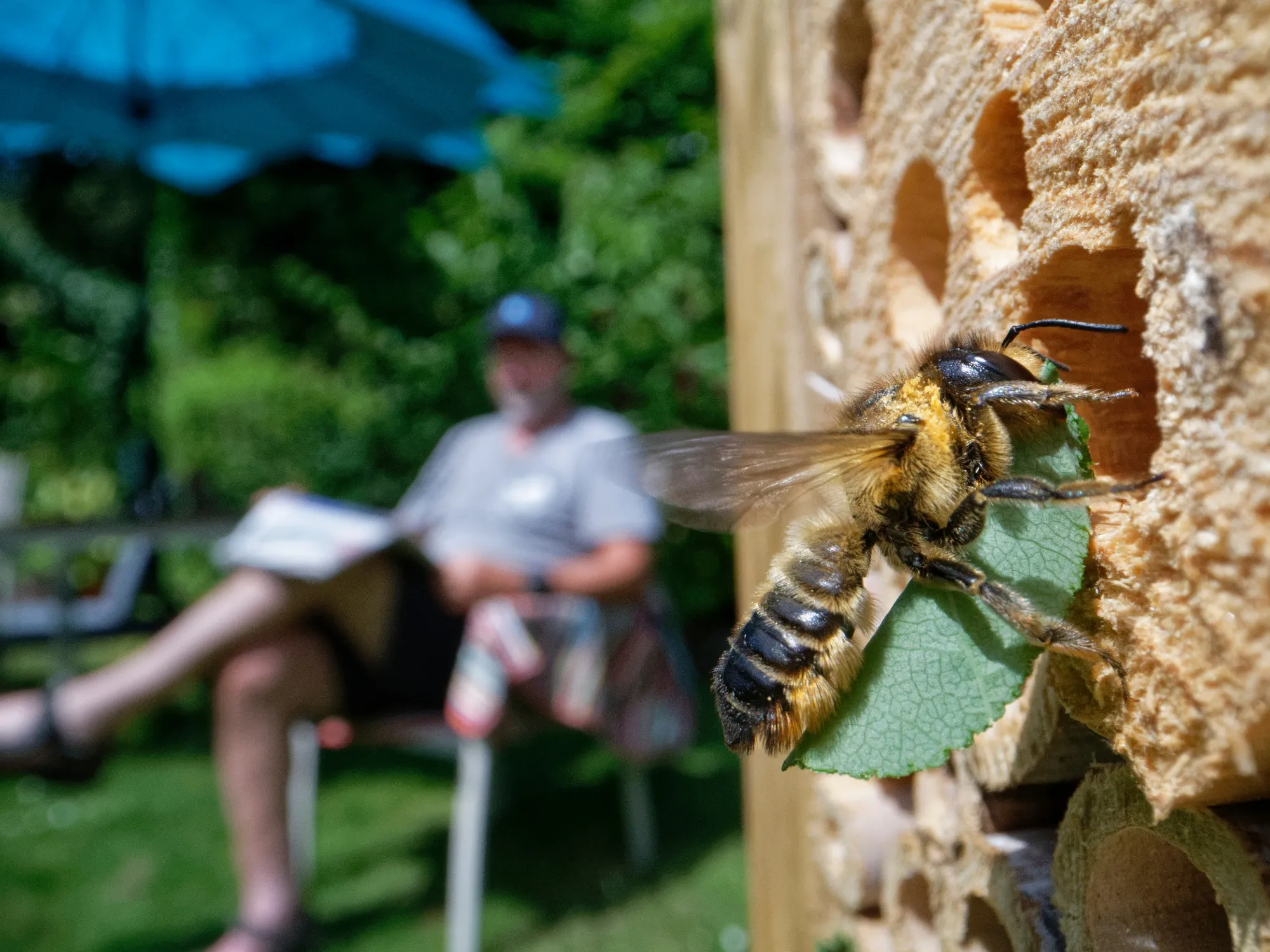Build a bee hotel
Offer solitary bees five-star accommodation with an easy-to-make bee hotel.

Solitary bees aren’t like honey bees that live in hives. As their name suggests, they make their nests on their own and lay their eggs in tunnels, such as in dead wood or hard soil. A bee hotel mimics these conditions, providing easily accessible space for egg-laying.
You can make your bee hotel whenever the mood takes you, but spring is when potential residents are queueing up for the best new abode. Sit and watch adult female bees find the nest on sunny days in spring. You’ll know they’re nesting if you see them flying in with pollen (some carry it on their bellies), with blobs of mud to create cell walls along the tube, or with bits of leaf (these are the Leaf-cutter Bees).
If you don’t have time or the right tools to make your own, then why not buy a ready-made RSPB bee hotel?
Instructions
A box of holes
In a nutshell, you're aiming to make a box or container stuffed full of different-sized hollow tubes, each with a dead end, around 15cm or so long.
You can get really creative with your materials and designs; just make sure your masterpiece is robust enough to stay outdoors for several years.
Buying a ready-made bee hotel is the easy way to do it if you don’t have the time or the right tools. Choose one with several different sizes of tubes – different species of bee like different diameter tunnels.
Make your bee hotel
We've come up with a simple design for you to try, but if you are nifty with carpentry, feel free to make your own. For our version, source a plank of timber (with the FSC logo, which means it comes from a sustainable source) about 1.5 cm thick and cut into the shapes shown to make a box with three compartments. Nail it together.
If you make your own, make sure it is 15 cm deep and the roof has a good overhang to keep off the rain. How you design your roof depends on your carpentry prowess. You can turn it vertically, give it a pitched roof or make it in the shape of St Paul's Cathedral. Please send us your pictures.
Note: the dimensions shown are for 15mm thick wood. If your wood is different to that, the dimensions of the Base should be 510mm minus 2 x thickness of the wood, and the side pieces should be 135mm + thickness of wood.
